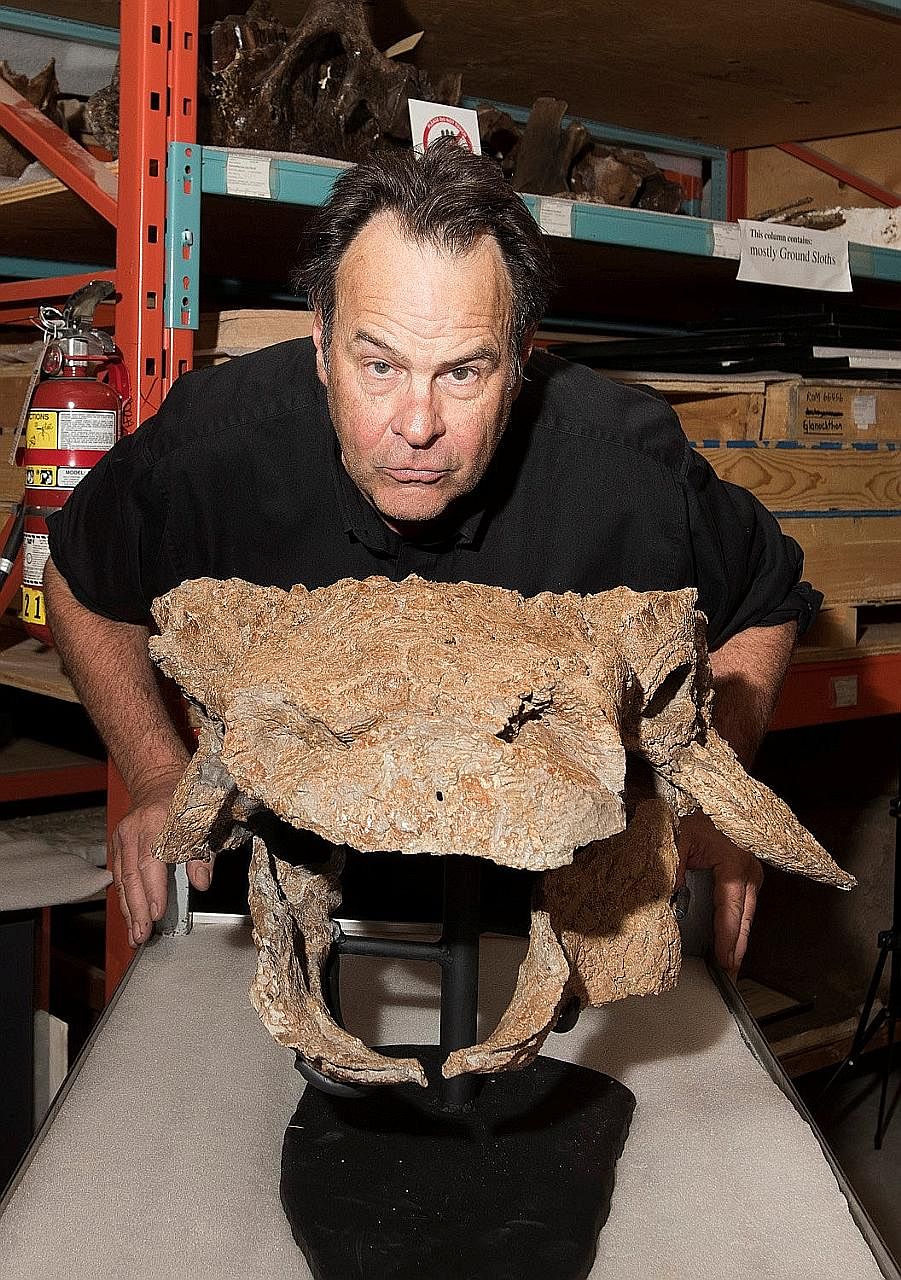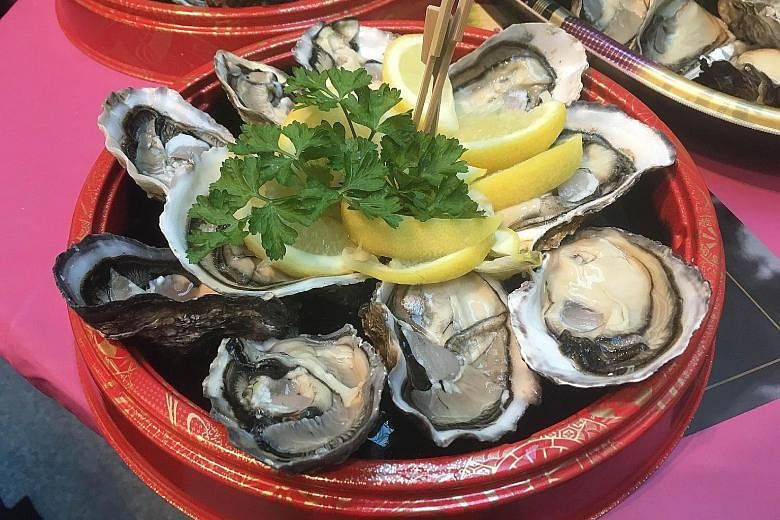A dinosaur like Zuul - who you gonna call?
It was more of a leg buster, but scientists have named a spiky, tank-like dinosaur that wielded a sledge-hammer tail after the fanciful beast Zuul from the blockbuster film Ghostbusters that menaced Bill Murray, Dan Aykroyd and friends.
Fossils of the four-legged, plant-eating dinosaur, called Zuul crurivastator, were unearthed in the northern Montana badlands. The dinosaur was about 6m long, weighed 21/2 tonnes and lived 75 million years ago.
Zuul belonged to a group of Cretaceous Period dinosaurs called ankylosaurs that were among the most heavily armoured land animals.
They were clad in bony armour from the snout to the end of the tail, often with spikes and a tail club that could be used to smash the legs of predators like the Tyrannosaurus rex cousin Gorgosaurus that lived alongside Zuul.
Zuul is one of the most complete and best-preserved ankylosaurs ever found, including rare soft tissue, palaeontologist Victoria Arbour of the Royal Ontario Museum in Toronto said.
Its fossils included skin impressions and keratinous sheaths on the tail spikes.

The dinosaur's name was inspired by its skull similarities to the head of the Ghostbusters monster, Royal Ontario Museum palaeontologist David Evans said.
"The skull of the new dinosaur has a short, rounded snout, gnarly forehead, and two sets of horns projecting backwards from behind the eyes, just like Zuul," he explained.
Aykroyd, the Ontario-born Ghostbusters star and co-writer, appeared in a video released by the museum alongside the dinosaur's skull, holding a photo of the movie beast. "We're so honoured that the Royal Ontario Museum would accord the name of this magnificent creature with the appellation that we called our 'terror dog' in the movie, and that is Zuul, Z-U-U-L," he said.
The dinosaur's tail, about 3m long, was an intimidating defensive weapon. "The menacing, spiked tail of Zuul is by far the coolest part of the animal," Dr Evans said. "It has a wicked series of large spikes at the base of the tail, then a series of elongated, peaked spines that run the length of the tail club, and it ends in a massive, expanded club."
The research was published in the journal Royal Society Open Science.
REUTERS
Raw oysters are safe to eat, come what May
There's no "r" in May - much to the dismay of oyster lovers who've learnt to follow this rule of thumb: Eat raw oysters only in months containing the letter "r".
But what does the spelling of a word have to do with the viscous helping of flesh you slurp out of a half-shell?
The short answer is: nothing. The life cycle of a particular species, the temperature and quality of the water in which an oyster grows, and how the mollusc is handled after leaving that water all can affect its health and taste - and your health.
"Essentially, if you buy oysters that are grown in healthy waters and they're handled properly, then there's no problem with eating them any time of the year," said Dr Donald Meritt, an aquaculturist at the Horn Point Oyster Hatchery at the University of Maryland Centre for Environmental Science.
The adage of eating oysters only in "r" months goes back (at least) to 1599, when it appeared in an English cookbook, Dyets Dry Dinner.
What it really means is: Say "no" to raw oysters in the summer. And there's some merit to that.
During the summer, unrefrigerated oysters spoil more easily. The bacteria that cause food sickness are more rampant, and oysters are spawning. Dr Meritt said the cookbook was probably referring to European flat oysters, Ostrea edulis, which brood their larvae inside the shell. During spawning season, a European oyster may come with a surprise crunch: a sac of baby oysters in tiny shells.
During summer, many oysters also become "snot bags", Dr Meritt said. An oyster's gonad - its largest organ - makes up 30 to 40 per cent of its body mass when fully developed. But as seasons change, warming water may induce oysters to spawn, releasing the contents of their gonads, either eggs or sperm.
This leaves oysters watery and thin, like a bag of pudding that has been replaced with water. Some say this affects the taste.
No oyster is immune from dirty water, though. Pollution is always a problem, but certain types of bacteria that can make you sick or even die may be more prevalent in the summer, and there's a bigger chance an oyster can become infected.
So "r" month or not, feel free to keep slurping - but proceed with caution.
NYTIMES

